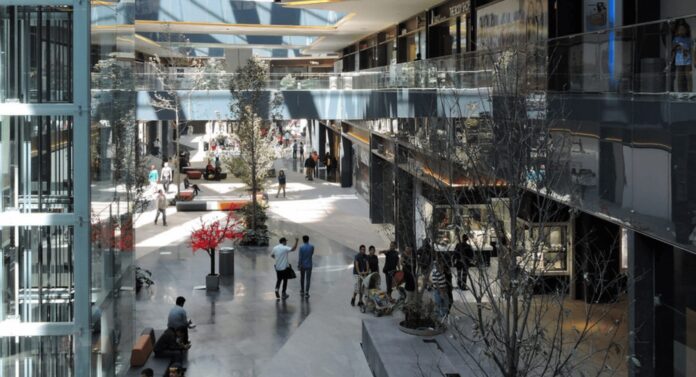One of the biggest challenges that operators face today is how to cost-effectively deliver high-capacity 4G coverage in densely populated indoor areas. In locations such as city centers, stadiums, and transport hubs, high numbers of end-users connecting to a network in a single location can cause a bandwidth bottleneck, slowing down traffic and reducing data speed and reliability. Yet end-users expect to receive the same kind of ‘superfast’ 4G service that they are accustomed to anywhere else.
This leaves operators stuck between a rock and a hard place. Investing in ‘always-on’ high-end capacity solutions can be a risky investment, as many busy indoor areas are not occupied all of the time. Operators face wasting network capacity during quiet times and large capital expenditure investing in the solutions that can deliver the level of service that their customers demand. So what options do mobile operators have to provide the necessary indoor coverage in a cost-effective manner?
The small BIG problem
Small cells are being deployed by operators as a solution to inject additional capacity during intermittent spikes in data consumption. This has proven effective in small venues (approximately 25-35,000 square feet) but results are less positive in larger spaces.
There are a number of reasons for this. Small cells can’t support multi-operator requirements when the data demand is high, for example, and they consume a disproportionate amount of energy. What’s more, the large number of small cells required to provide coverage across more extensive areas is unlikely to meet the CAPEX and OPEX requirements of many venue operators. While small cells play a huge role in bringing connectivity to users where and when it’s needed most, it’s not recommended in large, high demand environments.
DAS is the way forward
A DAS system, however, has the ability to support high traffic consumption across multiple operators making it a reliable solution for both indoor and outdoor high-density areas on a much larger scale, and over much greater distances. Utilizing fiber optics to carry RF signals across a wide area, DAS delivers a far more consistent stream of connectivity, especially compared with the small coverage holes experienced with small cell services.
Traditional DAS systems are not particularly economical and often result in chunks of capacity being unused for large periods of times, a problem which also arises with small cells. Analog DAS is also viewed as an expensive solution, involving long design, implementation and commissioning processes. The technology can also be prone to noise interference. Trying to reduce these issues, while lowering CAPEX and OPEX, is a difficult puzzle for operators to solve.
So this leaves operators in search of a cost-effective and controllable capacity. Like many solutions today, a digital approach is highly recommended. Digital DAS, which digitizes base station data sent as RF data packets to multiple remotes in a venue – and to other separate locations if necessary – has transformed DAS into the silver bullet for connectivity.
The benefits of digital
So, what is the solution for improved capacity and coverage for large, highly-populated environments? Digital DAS, whereby base station data is digitized and sent as RF data packets to multiple remotes in a venue, is the premium solution for venues and operators.
Digital DAS offers a unique level of control over both uplink and downlink data transfer, allowing for better radio frequency noise management. Noise management algorithms featured in digital DAS will constantly monitor performance to keep signal levels at pace with the noise ratio in order to ensure maximum data throughput.
Capacity management of the downlink signal means that capacity resources can be precisely directed and shifted around a location with ease, and also be scaled up or down depending on the demand at a particular time. With small cells and traditional DAS on the other hand, capacity is distributed across the whole network at all times – a costly waste of capacity and energy.
Digital DAS offers unprecedented levels of scalability and flexibility due to its software-defined approach to venue sectorization offers. Digital remote units can be added whenever and wherever required, allowing operators to expand with more capacity and more frequencies as the need arises. This level of flexibility essentially futureproofs operators’ technologies, allowing them to adjust to upgrades much more easily.
Digital DAS is based on the revolutionary cloud radio access network (C-RAN) model, where the baseband processing is focussed in a central location away from a venue, hosted in the cloud and managed virtually. This approach enables radio frequency energy to be aggregated and sent to various locations over a huge distance. In a city for example, from a central location, RF energy could be sent to a stadium, a hotel and highly populated outdoor area, concurrently.
The C-RAN approach removes the complexity and cost of ownership of multiple operating and control sites for each area that needs to be connected. Network resources can then be distributed on one fiber line to a location and cascaded to different sectors of a building. In a city, a digital DAS system can connect directly into the fiber lines that already exist in order to cost-effectively transport resources to a specific area or sector of a venue.
With both humans and technology intertwined in their voracious demand for high performance services and capacity, there’s little wonder operators and providers are searching for effective end-to-end solutions to keep pace. The demand from users will only heighten as more IoT solutions are unrolled. By offering flexibility, scalability and improved performance, digital DAS has emerged to fill the gaps left by analog DAS and small cells in a precise and cost-effective manner.

